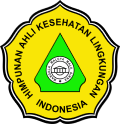RISIKO CEDERA MATA PADA PEKERJA INDUSTRI PIPA BAJA
DOI:
https://doi.org/10.26630/rj.v14i1.2172Keywords:
Safety, Accident, PPE, KnowledgeAbstract
An eye injury is a trauma to the eye that can result in damage to the eyeball, eyelids, eye nerves and orbital cavity. Eye injuries can occur due to work processes in various industries, especially in the metal industry. PT. Bakrie Pipe Industry (BPI) is a metal industry that produces steel pipes by changing steel plate sheets into pipe shapes. One of the risks of work accidents in the production process is eye injury due to exposure to particles/gram of iron during the cutting process. This study aims to determine the risk factors for eye injury in workers in the Production Department of PT. Bakrie Pipe Industries, Bekasi, West Java.
This study used a cross-sectional design involving all workers in the Production Department as research subjects, as many as 36 people. Data collection was carried out by interview and observation, then the data were analyzed using the chi-square test. The risk factors assessed were age, knowledge, attitude, noise and personal protective equipment against eye injury.
The results showed that the risk factors for eye injury were knowledge (OR = 280.00; p value = 0,000), age (OR = 61.75; p value = 0,000), noise (OR = 39.00; p value = 0,000). , and the use of PPE (OR = 17.00; p value = 0.001).
Increasing workers' knowledge about work risks is an effort that must be continuously carried out to avoid eye injuries, in addition to the necessity of using Personal Protective Equipment (PPE), and to carry out more intensive supervision.Â
References
Alfanan, A. (2014). Pengaruh Pemakaian Alat Pelindung Mata Terhadap Ketajaman Penglihatan Pegawai Bengkel Las di Wilayah Terminal Bus Wisata Ngabean Kota Yogyakarta. Jurnal Medika Respati, 9(3), Hal. 1-11.
Amelia, R. (2019). Faktor-Faktor yang menyebabkan Kecelakaan Kerja pada Pekerja Bagian Pengelasan di PT. Johan Santosa. Jurnal Kesehatan Masyarakat, 3(1), Hal. 35-49. https://doi.org/10.1017/CBO9781107415324.004
Aryatiningsih, D. S., & Husmaryuli, D. (2016). Kejadian Kecelakaan Kerja Pekerja Aspal Mixing Plant (AMP) & Batching Plant di PT. LWP Pekanbaru Tahun 2015. Jurnal Kesehatan Masyarakat Andalas, 10(2), Hal. 145-150. https://doi.org/10.1134/S1028334X07080132
Asrini. (2013). Gambaran Penggunaan Alat Pelindung Diri dan Gangguan Kesehatan Pekerja Industri Meubel di Kecamatan Tolangohula Kabupaten Gorontalo. Jurnal Ilmu Kesehatan Dan Keolahragaan, 1(1), Hal. 1-8.
Azwar, S. (2011). Sikap dan perilaku dalam: sikap manusia teori dan pengukurannya. Pustaka Pelajar.
BPJS. (2016). Jumlah Kecelakaan Kerja Di Indonesia Masih Tinggi. https://www.bpjsketenagakerjaan.go.id/berita/5769/Jumlah-kecelakaan-kerja-di-Indonesiamasih-tinggi.html
Hasanah, P. U., Faisya, A. F., & Camelia, A. (2012). Penilaian Risiko Keselamatan Kerja Pada Kegiatan Produksi Lateks Pekat ( Konsentrat ) Di PT Bumi Rambang Kramajaya Gandus Palembang. Jurnal Ilmu Kesehatan Masyarakat, 3(1), hal. 69-80.
Indrayani, R. (2017). Analisis Risiko Keselamatan Kerja Pada Proyek Pengembangan Bandara Internasional Juanda Terminal 2 Surabaya. Ikesma, 13(2), Hal. 77-93. https://doi.org/10.19184/ikesma.v13i2.7029
Insanno, J. S. (2016). Perbedaan Unsafe Actions Antar Shift Kerja Pada. The Indonesian Journal of Occupational Safety and Health, 2(2), Hal. 132-141. http://e-journal.unair.ac.id/index.php/IJOSH/article/view/4180/2825
Kani, B. R., Mandagi, R. J. M., Rantung, J. P., & Malingkas, G. Y. (2013). Keselamatan dan Kesehatan Kerja Pada Pelaksanaan Proyek Konstruksi (Studi Kasus : Proyek PT. Trakindo Utama). Jurnal Sipil Statik, 1(6), Hal. 430-433. https://doi.org/10.4135/9781848608399.n25
Mufarokhah, L. (2006). Hubungan pengetahuan keselamatan kerja dengan pelaksanaan pencegahan kecelakaan kerja pada karyawan bagian spining di PT. Primatexco Indonesia Batang [Universitas Negeri Semarang]. https://lib.unnes.ac.id/3317/1/1251a.pdf
Nayaka, I. G. M. W. S., Sarjana, I. M., & Priyanto, I. M. D. (2014). Jaminan Sosial Pekerja Kontrak Pada Hotel Bali Mandira Beach Resort & SPA. Jurnal Universitas Udayana, 04(03). https://ojs.unud.ac.id/index.php/kerthasemaya/article/view/20068/13337
Nursyachbani, P. A., & Susanto, N. (2018). Analisis Risiko Kecelakaan Kerja pada Proyek Underpass Jatinengaleh Semarang dengan Metode Failure Mode and Effect Analysis (FMA). Industrial Engineering Online Journal, 6(4), Hal. 1-7.
PT. Bakrie Pipe Industries. (2017). Company Profil.
Sakinah, Z. V. (2018). Aplikasi Health Belief Model Dalam Menganalisis Perilaku Penggunaan Kacamata Pelindung. Jurnal PROMKES, 5(1), Hal. 105-115. https://doi.org/10.20473/jpk.v5.i1.2017.115-128
Ulandari, A. A., Naiem, M. F., & Wahyuni, A. (2014). Hubungan Kebisingan Dengan Keluhan Kesehatan Non Pendengaran Pada Pekerja Instalasi Laundry Rumah Sakit Kota Makassar. Universitas Hasanudin, Makasar.
Yudhawan, Y. V., & Dwiyanti, E. (2017). Hubungan Personal Factors Dengan Unsafe Actions Pada Pekerja Pengelasan Di PT DOK Dan Perkapalan Surabaya. Jurnal Ilmiah Kesehatan Media Husada, 6(1), Hal. 141-150. https://doi.org/10.33475/jikmh.v6i1.70
Downloads
Published
How to Cite
Issue
Section
License
Copyright (c) 2020 Ruwa Jurai: Jurnal Kesehatan Lingkungan

This work is licensed under a Creative Commons Attribution-NonCommercial 4.0 International License.

Ruwa Jurai: Jurnal Kesehatan Lingkungan is licensed under a Creative Commons Attribution-NonCommercial 4.0 International License.
Authors who publish with this journal agree to the following terms:
- Authors retain copyright and grant the journal right of first publication with the work simultaneously licensed under a Creative Commons Attribution-Non Commercial License that allows others to share the work with an acknowledgment of the work's authorship and initial publication in this journal.
- Authors are able to enter into separate, additional contractual arrangements for the non-exclusive distribution of the journal's published version of the work (e.g., post it to an institutional repository or publish it in a book), with an acknowledgment of its initial publication in this journal.
- Authors are permitted and encouraged to post their work online (e.g., in institutional repositories or on their website) prior to and during the submission process, as it can lead to productive exchanges, as well as earlier and greater citation of published work.









